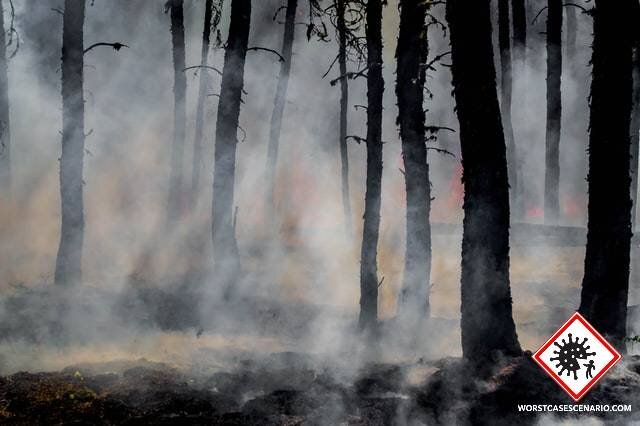How to Survive a Wildfire
Photo by Joanne Francis on Unsplash.
1. Establish wind direction.
Observe smoke to see which way it is being blown. Look as high in the sky as possible, where smoke direction is less affected by contours in the terrain or pockets of intense heat on the ground.
2. Move upwind.
Travel upwind, fast. Moving upwind is the critical first step for wildfire survival, regardless of topography.
3. Determine slope.
If you have the option, travel downslope. Wildfires create hot air masses that rise, making higher elevations more prone to ignition, and more dangerous. Valley areas are more likely to hold moisture and contain less-combustible vegetation.
4. Search for firebreak.
As you travel, look for a natural or built firebreak: paved or gravel road, clear-cut area created by the Forestry Service, boulder field, or body of water. These areas may provide temporary safety from heat and flames until help arrives.
5. Locate green trees.
Large trees retain more moisture than grass or dry scrub, and may be a good alternative if you can’t reach a firebreak. In regions of severe drought, however, dry trees may be highly combustible.
6. Move quickly.
Wind-driven wildfires can move many times faster than a person can run, so use a vehicle if one is available. If you’re on foot and fear you are being overtaken, cover exposed skin with wet clothing and run through the leading edge of the fire into an area that has already burned.
7. Dig a fire trench.
If you are surrounded and have no means of escape, move to a valley or gully. Dig a hole in the side of the slope, place a tarp or blanket over the hole, cover it with dirt, and then crawl under the tarp into the hole. Alternatively, dig a trench 2-3 feet deep, lay down in it with your feet facing the direction of the flames, and cover yourself with dirt. Leave an air-hole, and wait for the fire to travel over you. This will not be pleasant.
Pro Tip
A wet cloth over your nose and mouth can help filter out smoke particles, but may make it more difficult to breathe.

